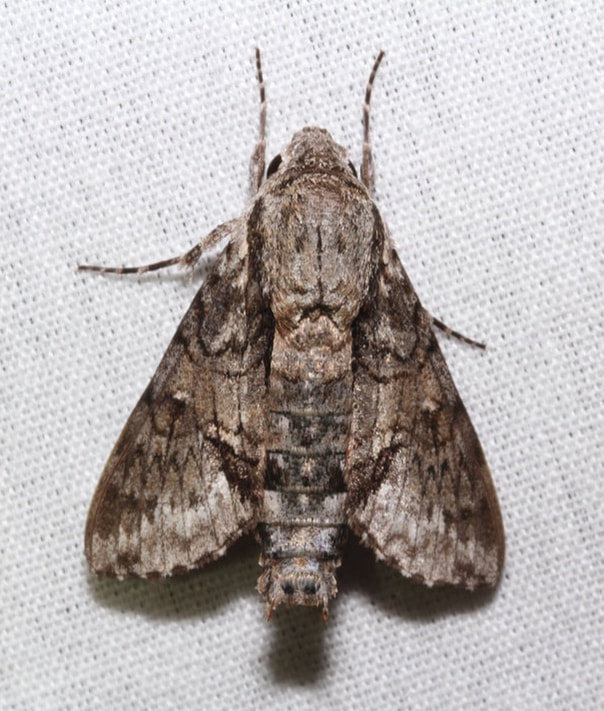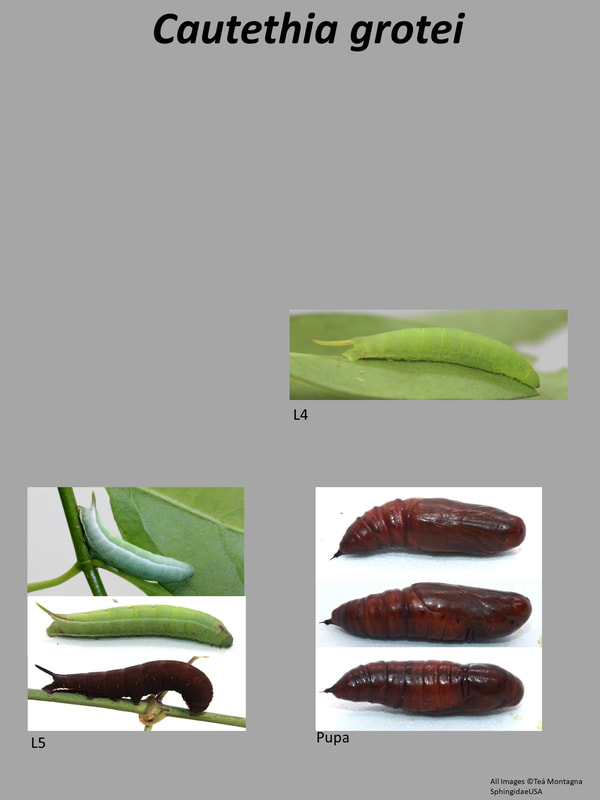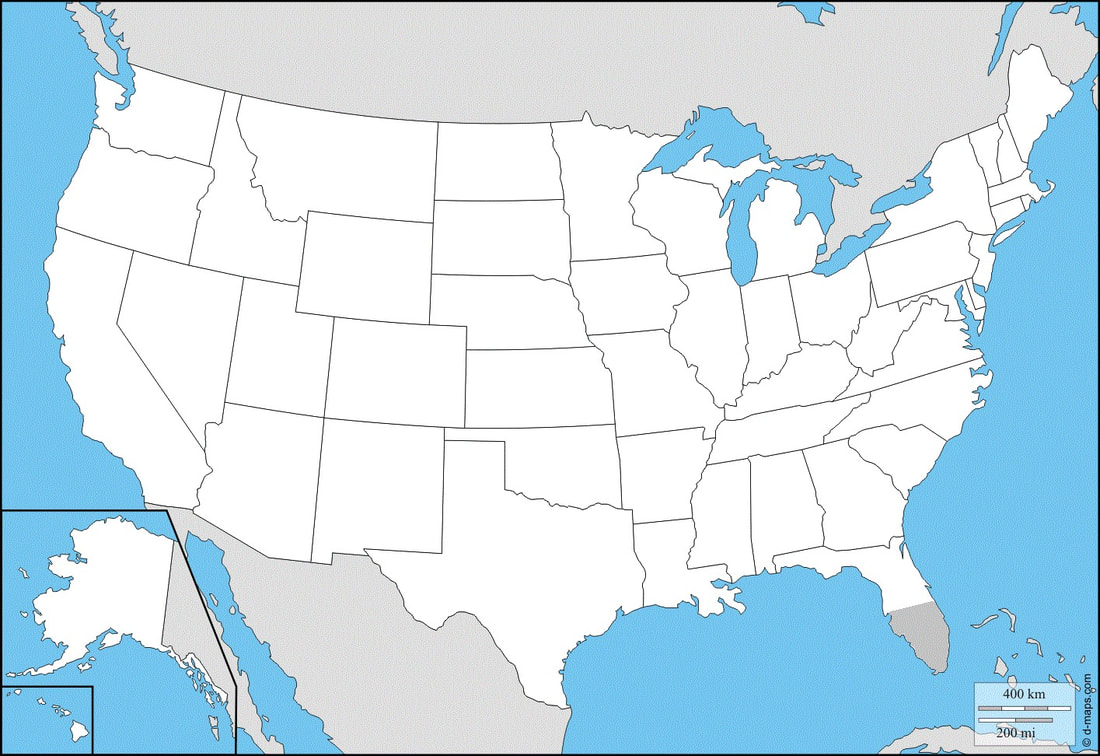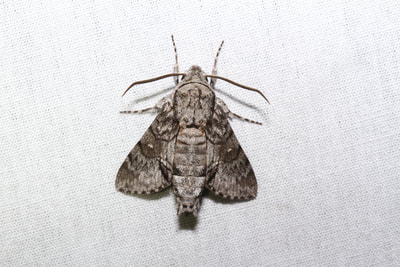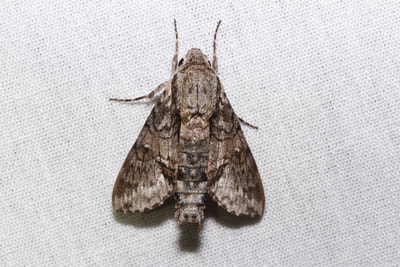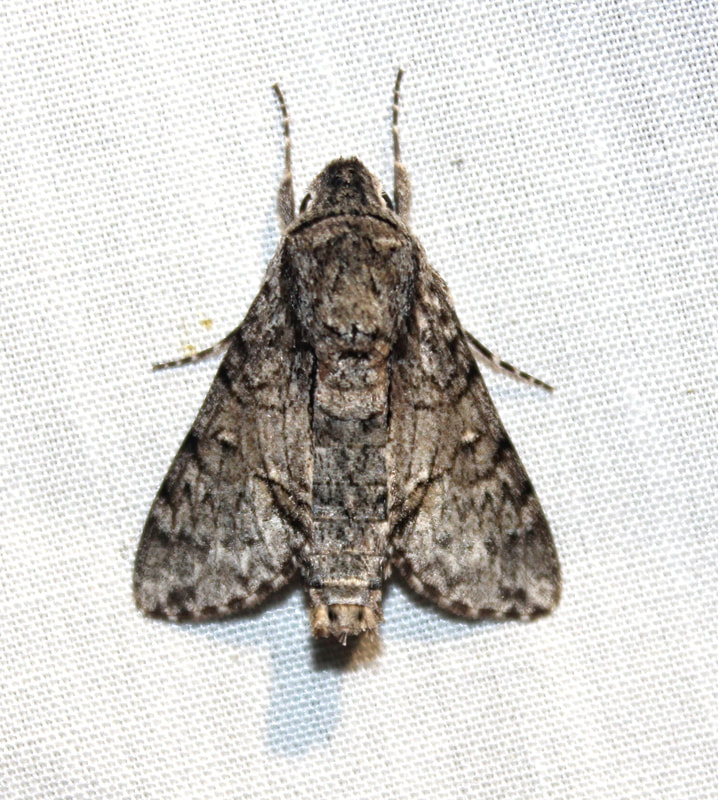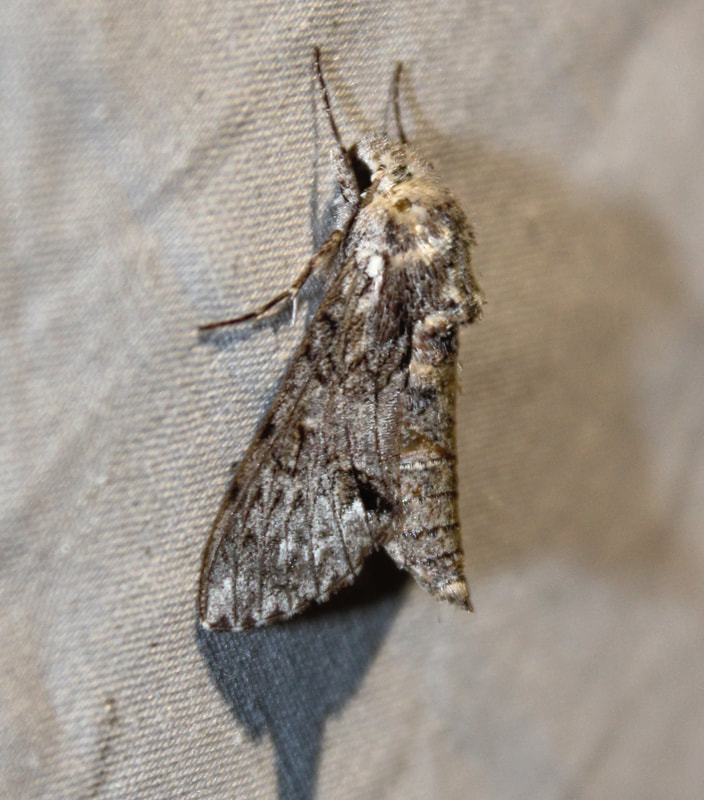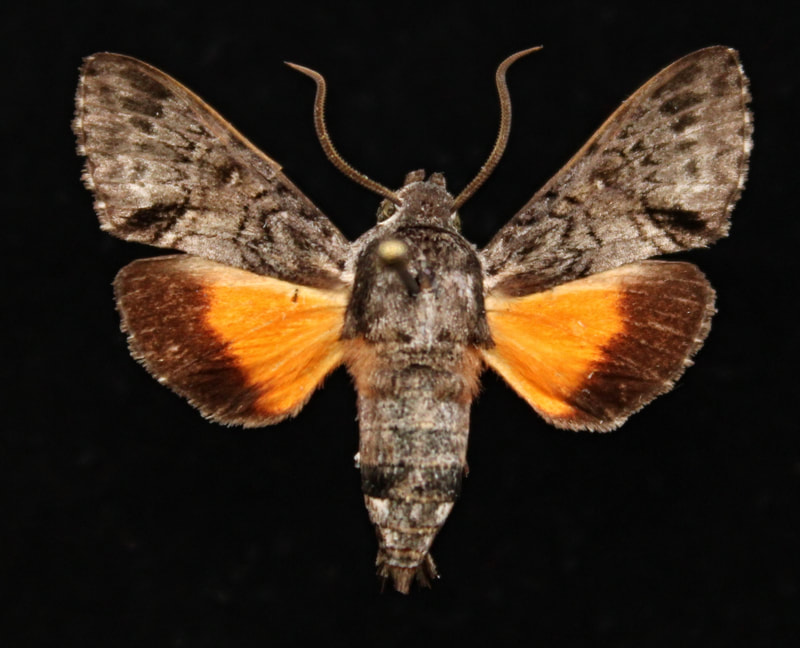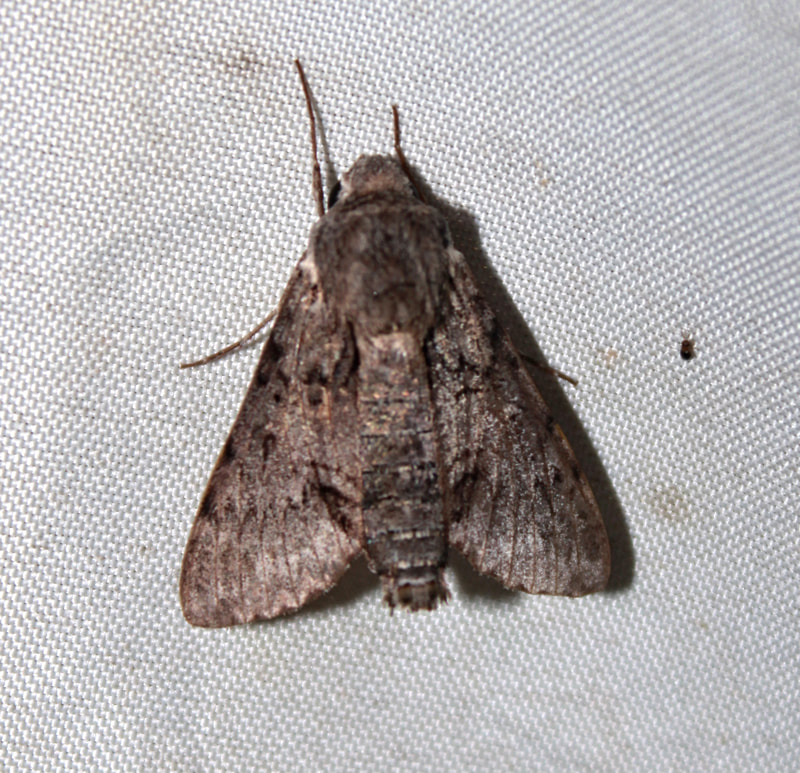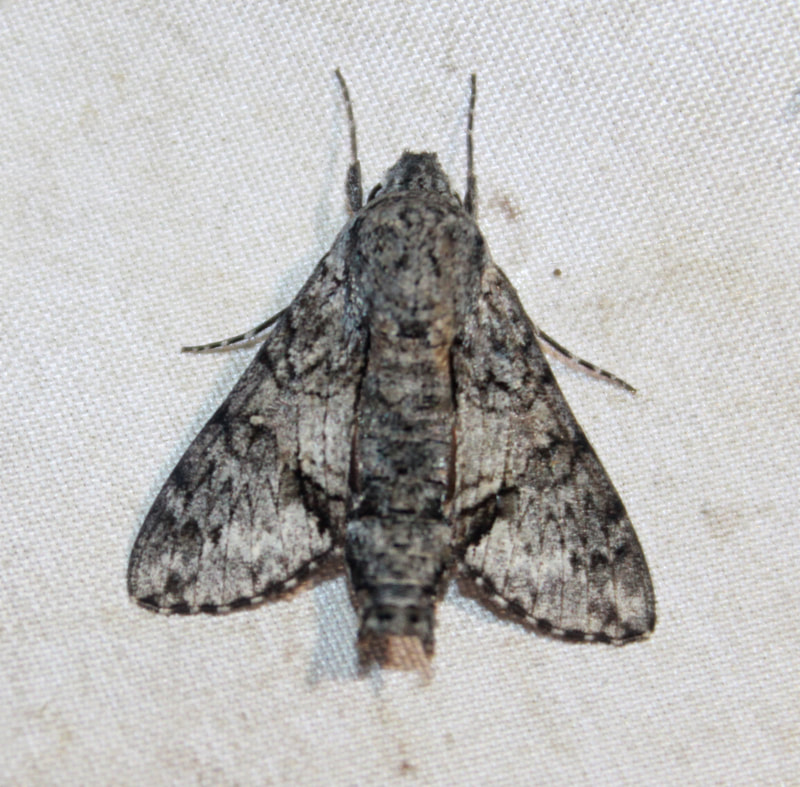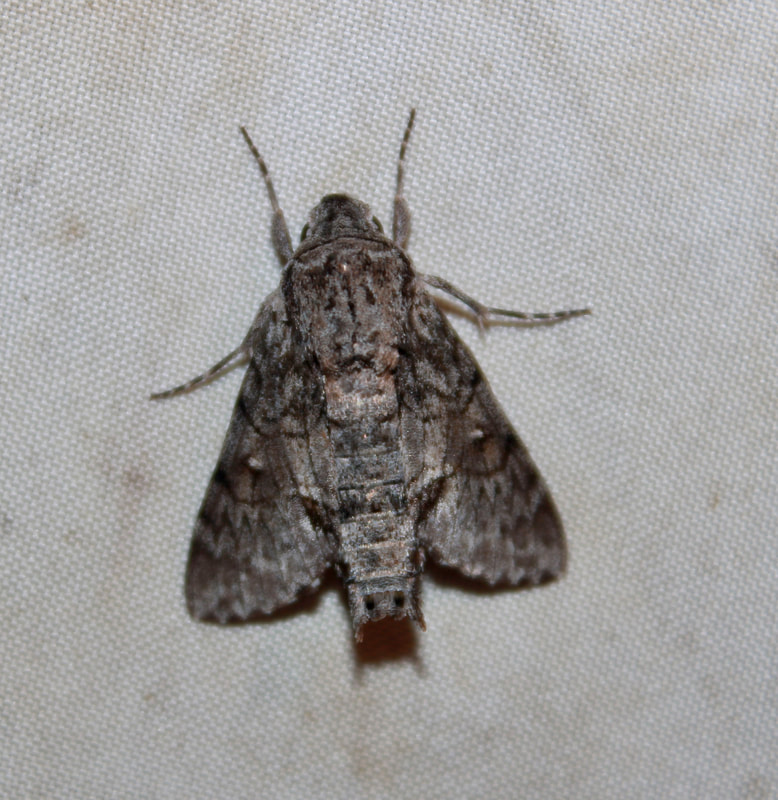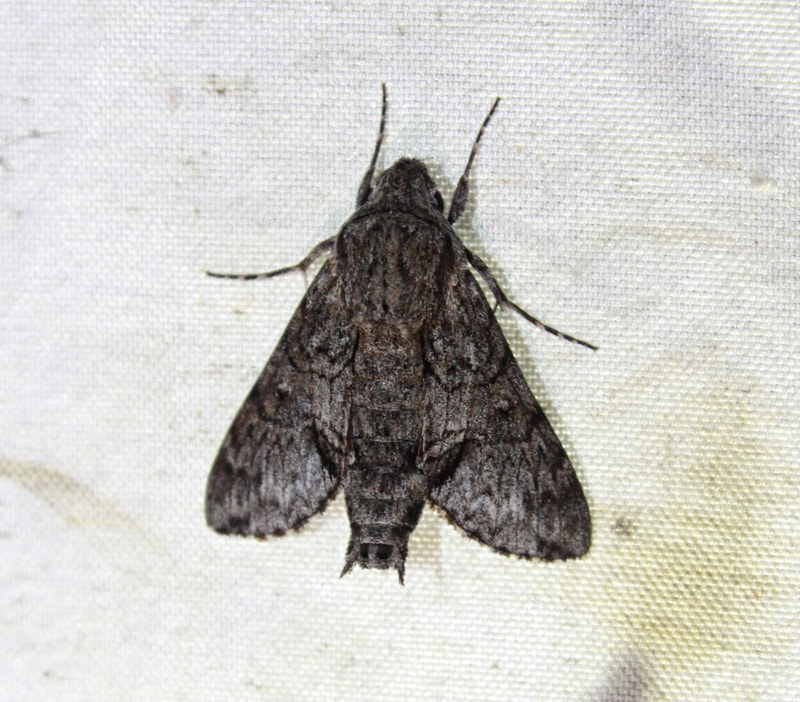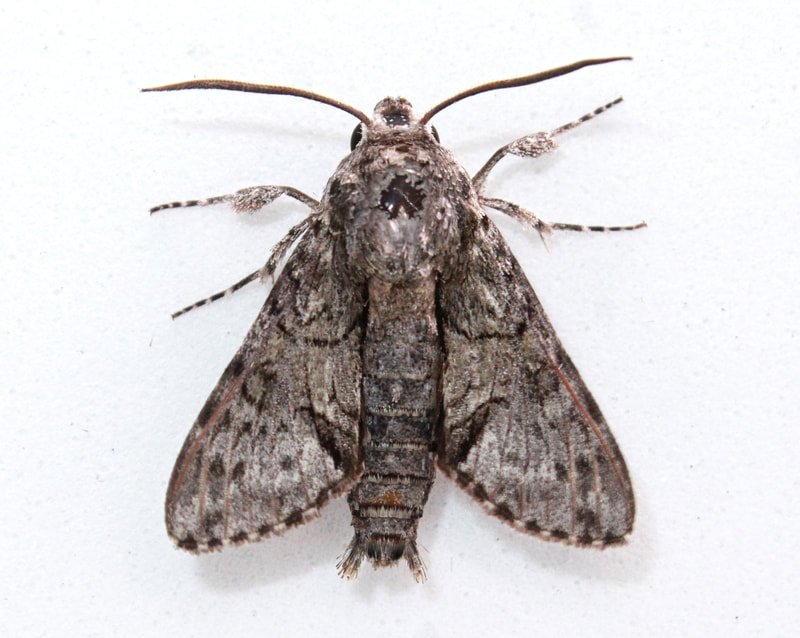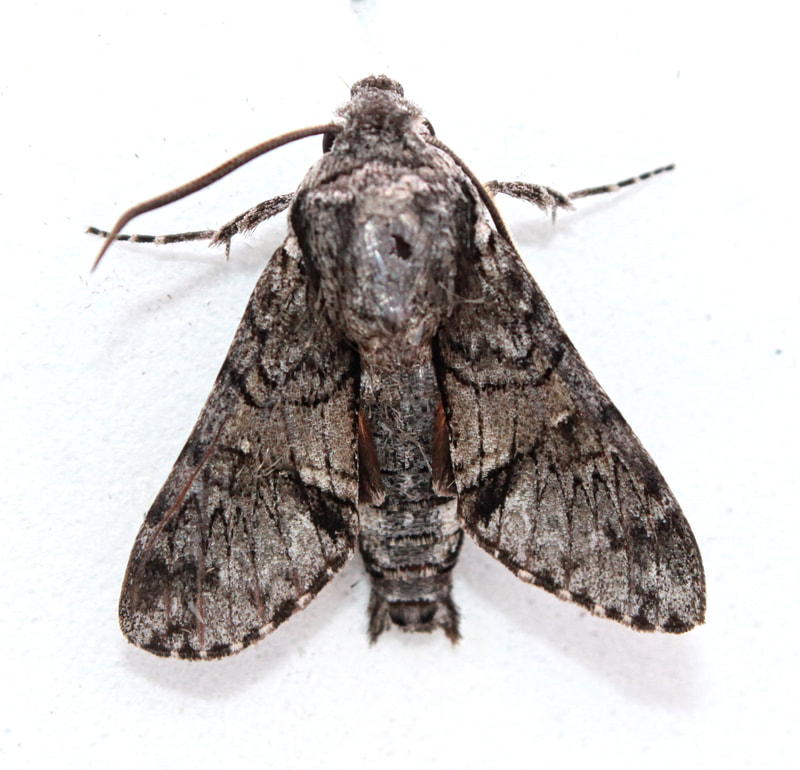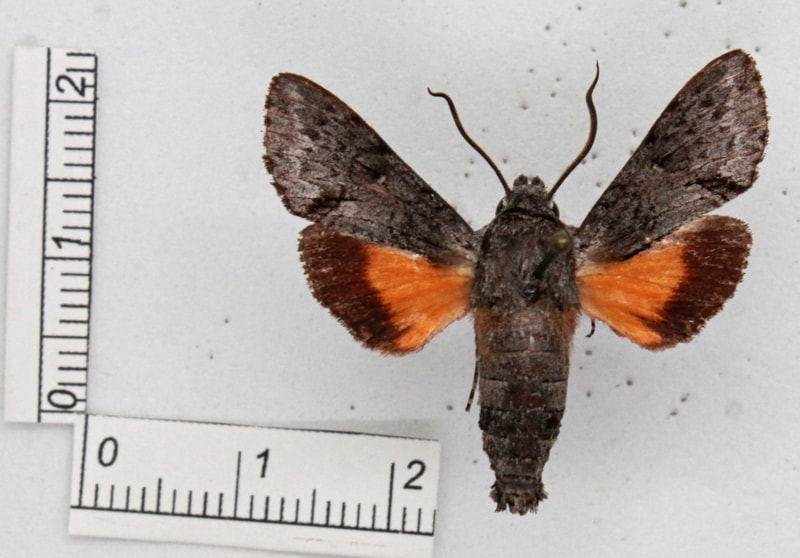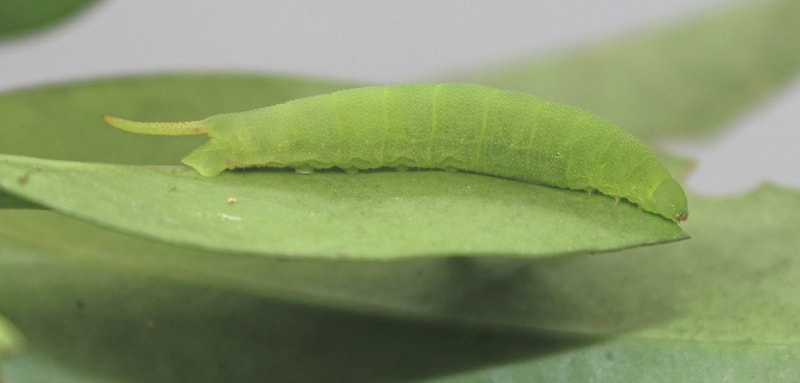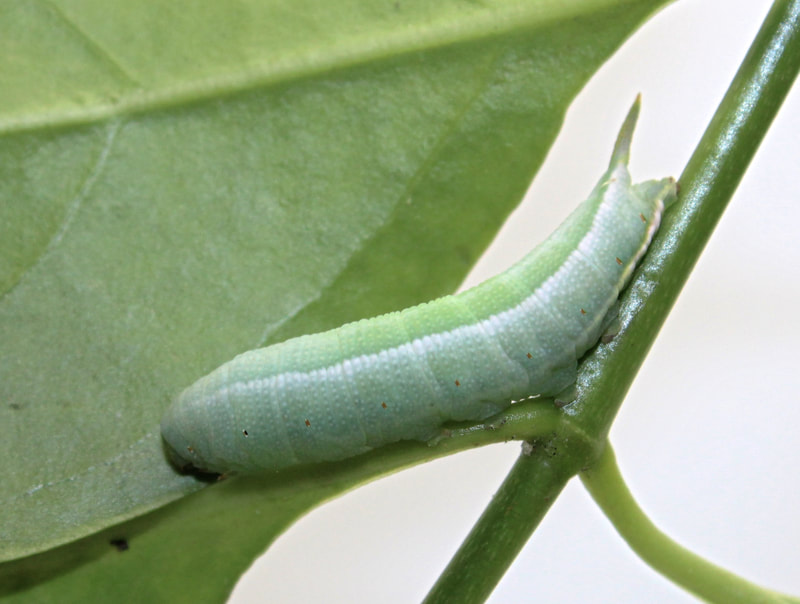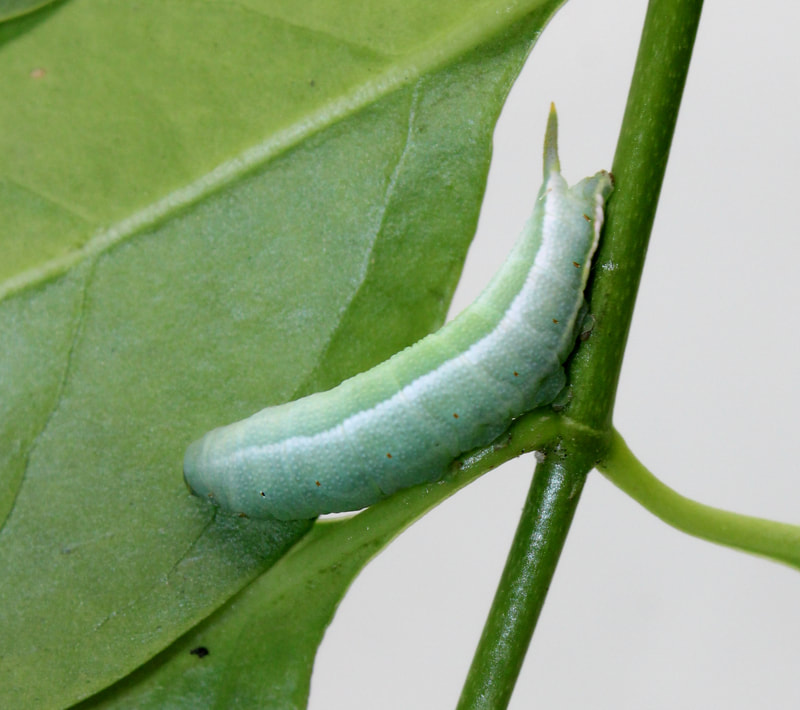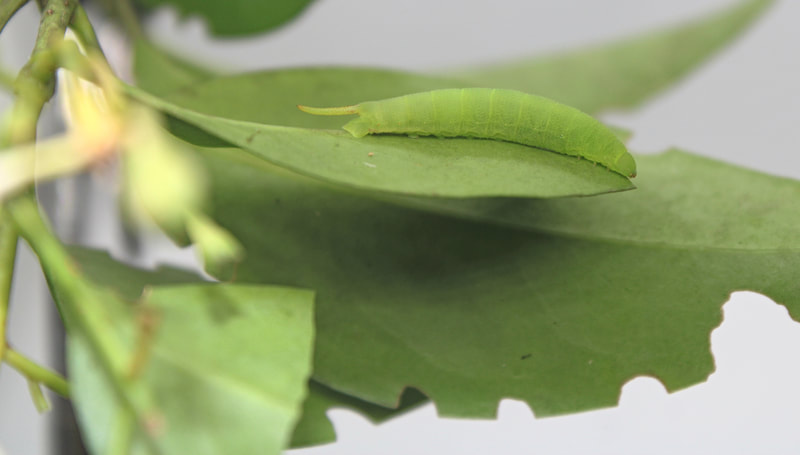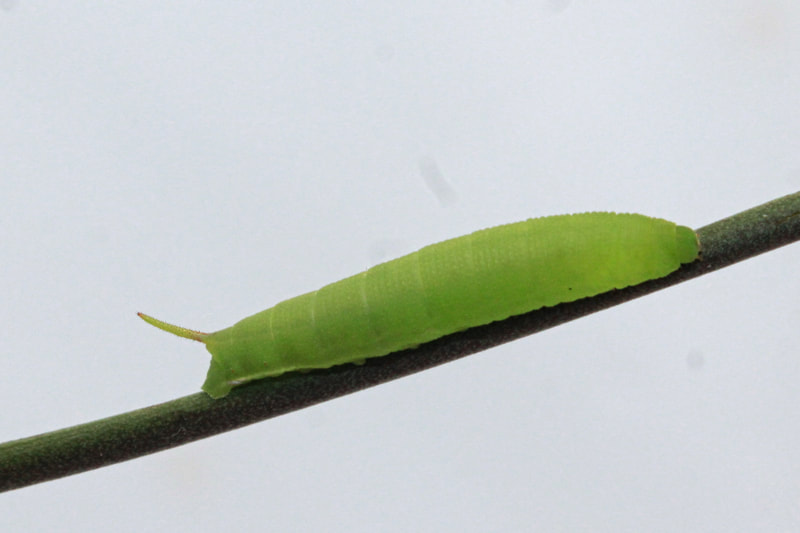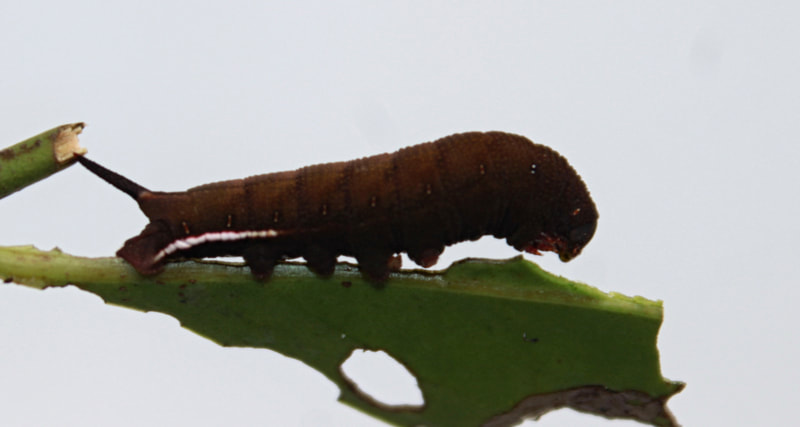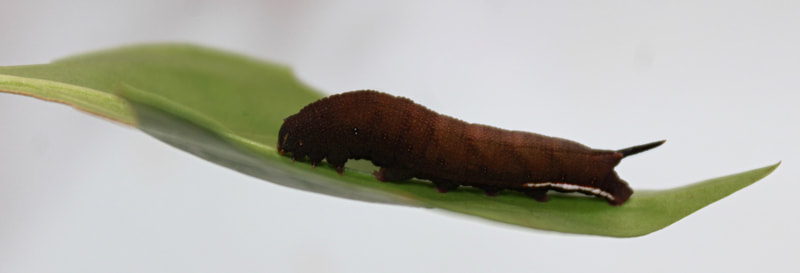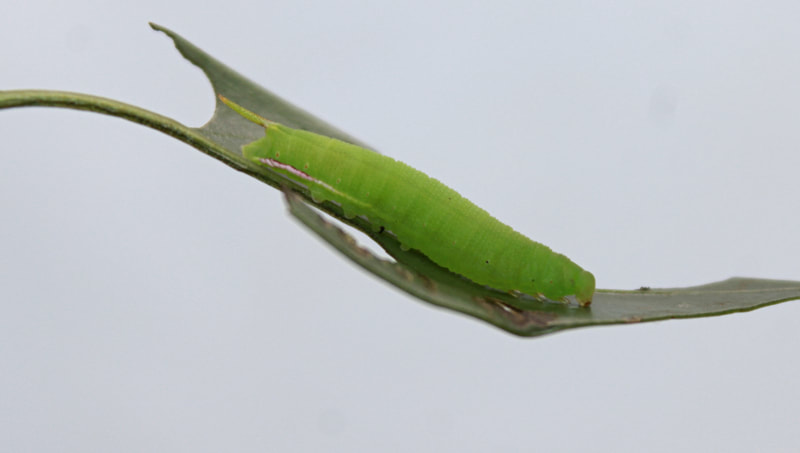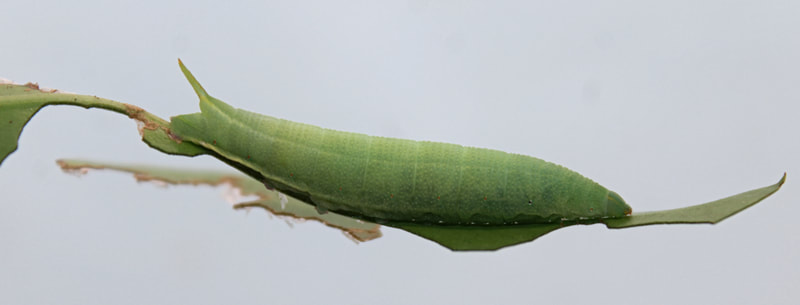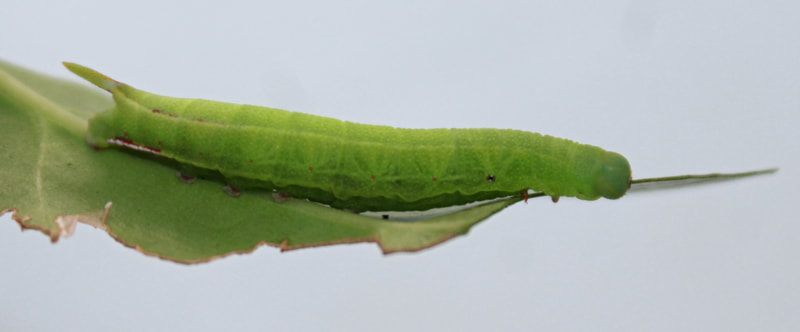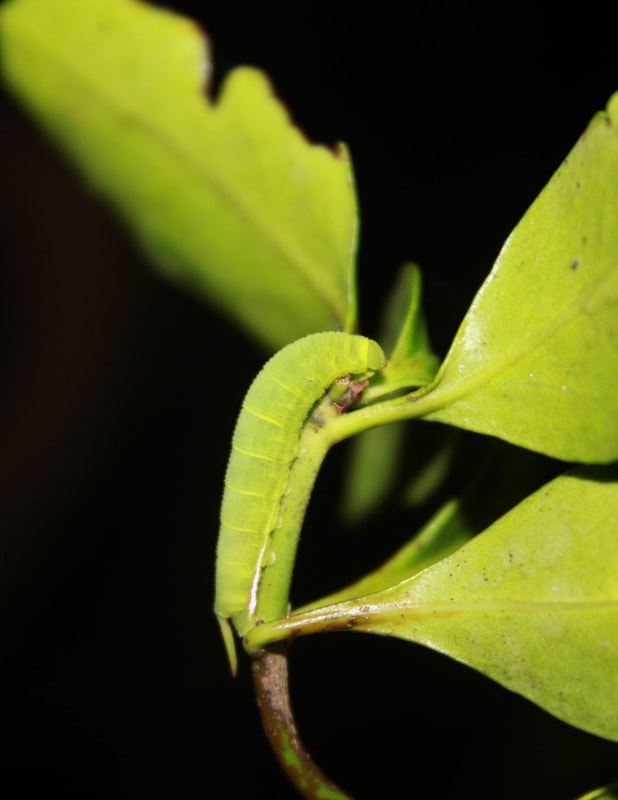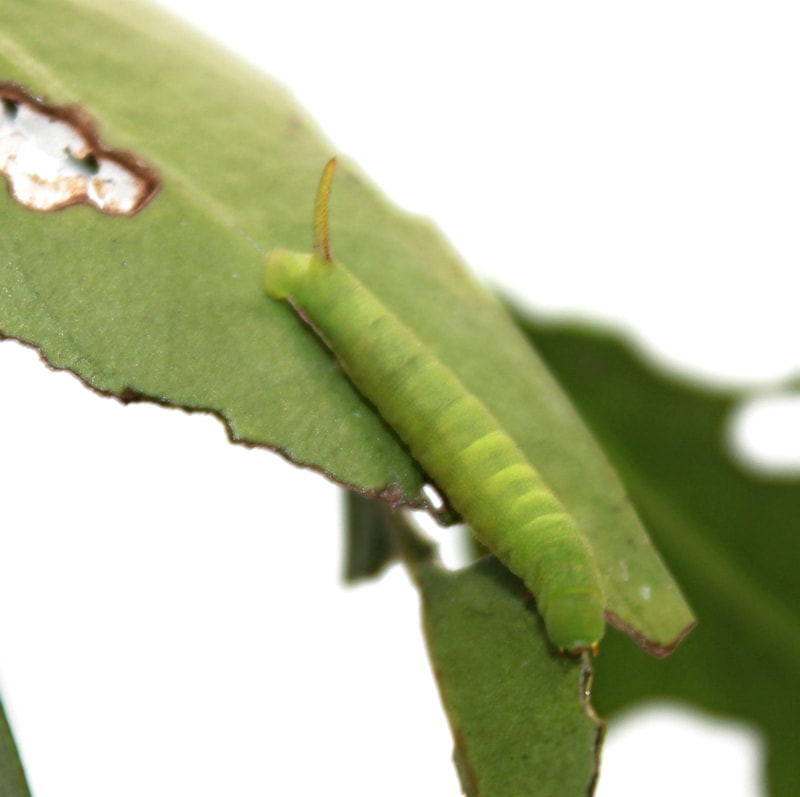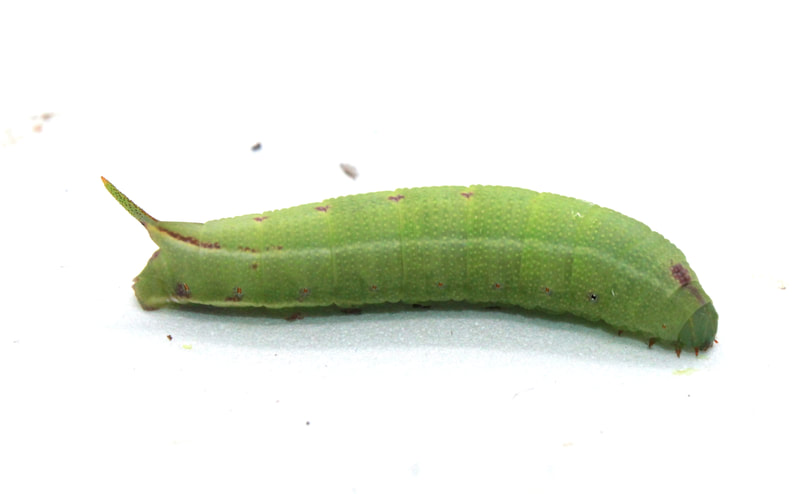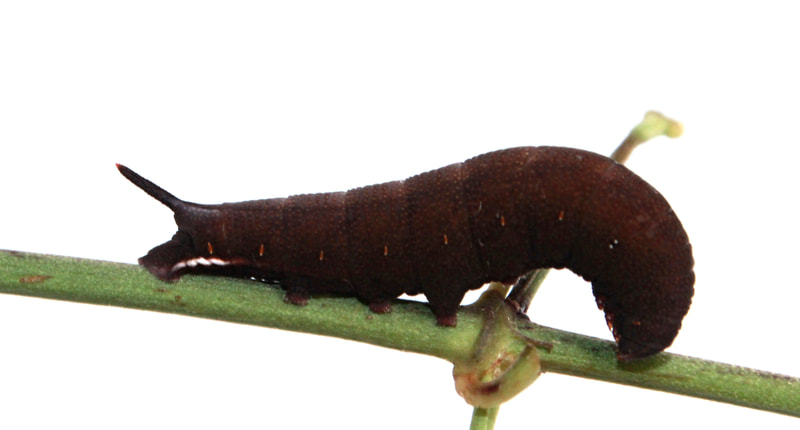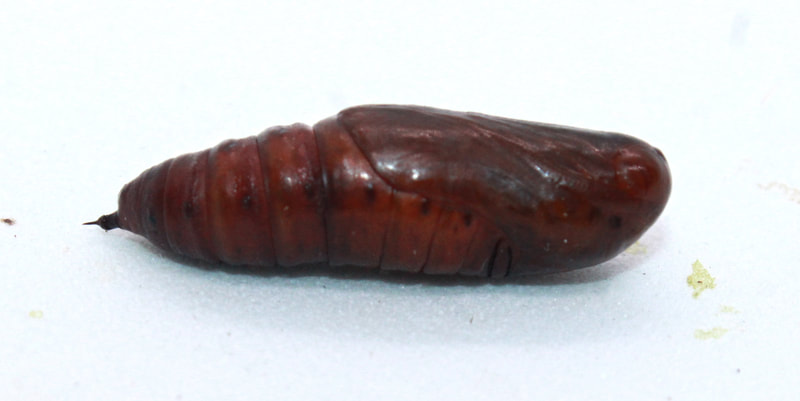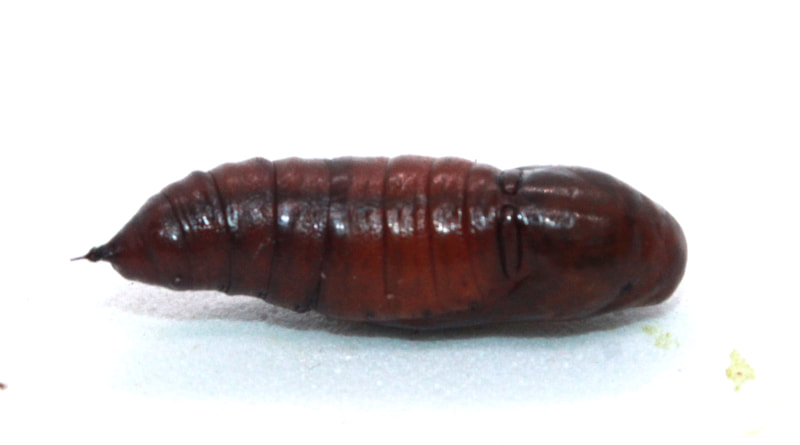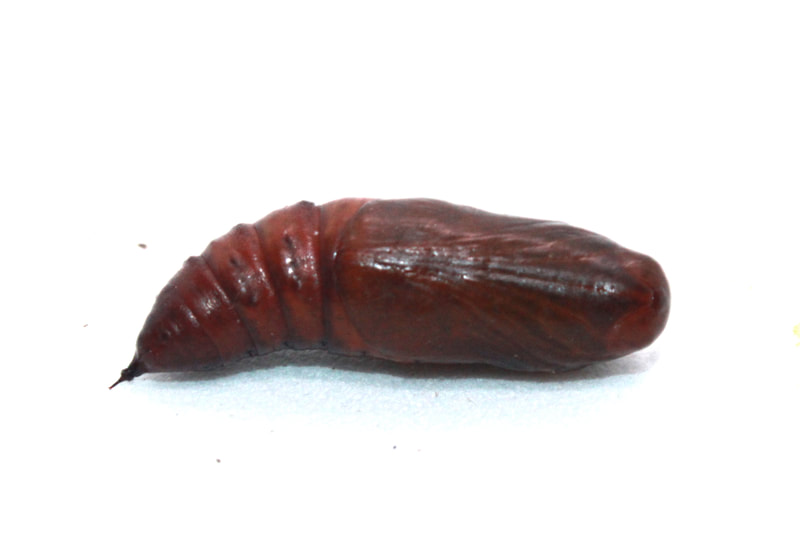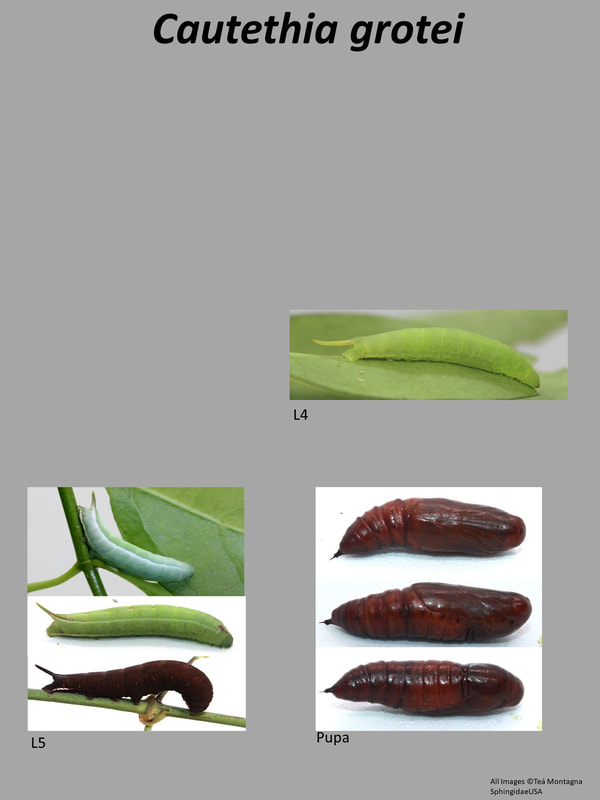|
Common Name(s): Grote’s Sphinx
Ecology and Life History: This moth is present (usually in good numbers) year round in South Florida. Two peaks have been recorded by the authors, one in June and one in December. There are undoubtedly more. This moth is highly attracted to light, and can be quite common. Peak flight time seems to be between 2200-0300. Other methods of attraction have not been tested as this moth is so attracted to light. This is a small moth, both males and females are identical. Males tend to rest with the end of their abdomen slightly upturned whereas females have a rounder abdomen that is flat at rest. Eggs are deposited on the leaves of hostplant. Young larvae feed singly on the undersides of leaves. Older larvae do not wander far, and also feed on the undersides of leaves. New growth is the most appealing to this larva. Habitat and Searching for Larvae: In South Florida, a multitude of larvae have been found on Milkberry (Chiococca alba). They will also eat Snowberry (Symphoricarpos albus). Since neither hostplant is tall, larvae can be found virtually anywhere on it. Generally the larger, more sprawling new growth is most productive. Tropical hammocks in South Florida seem to be this moth’s favorite habitat. They are likely found in other habitats, particularly more northward in Florida. This moth is found year round in Florida and larvae are no different. Interestingly, while the larva is green, it does not fluoresce under UV light. The larvae contrast better under the light, and the head capsule and collar do fluoresce a bit. Rearing Notes: Our attempts at obtaining eggs using a flight cage and cut hostplant were inconclusive. Adults seem to need to be fed daily, and may lay better in a bag or styrofoam cooler. This larva does extremely well on Chiococca alba and the plant holds extremely well in or out of water. This larva does not seem to be highly susceptible to disease in captivity. They can tolerate moderate to high amounts of humidity fairly easily, and do not seem to perish easily. Due to the small nature of this species, rearing communally is simple and effective. Many larvae can be reared in a tupperware together with no ill-effects. Sleeving is likely an equally productive rearing method. Pupation for this species is easy using the paper towel method outlined in the general information tab. Soil is likely an equally appropriate technique. Host plants: Click here to load this Caspio Cloud Database
Cloud Database by Caspio |
Adult description:
This is a very small sphingid, with forewings only 13-18mm in length (2). While there are other Cautethia spp. found in the US, this is the only one found in Florida and thus cannot be confused with the other species. The hindwings of this moth are orange in color. The forewings are variable but usually gray with some black lines. There may be a small white discal spot. Larval description: L4: The larva is plain green. The last abdominal segment is lined in white at the base. The horn is green and not distinctive. The larva is incredibly smooth. L5: The green, green-blue, or sometimes brown larva lacks abdominal stripes near the spiracles. The last abdominal segment before the caudal horn is bordered in white at the base. There are two dorsal stripes that lead from the head capsule to the horn. The spiracles are red in color. Generally the sides of the larva are lighter than the dorsal region. In the brown form, the entire larva is brown with barely visible markings. The horn matches the ground color of the larva and is pointed sharply backward. |
The gallery to the left contains photos of Cautethia grotei adults. If you have a photo that you would like to submit to us, please contact us.
The gallery to the right contains photos of Cautethia grotei larval and pupal stages. If you have a photo that you would like to submit to us, please contact us.
The gallery to the right contains photos of Cautethia grotei larval and pupal stages. If you have a photo that you would like to submit to us, please contact us.
|
|
